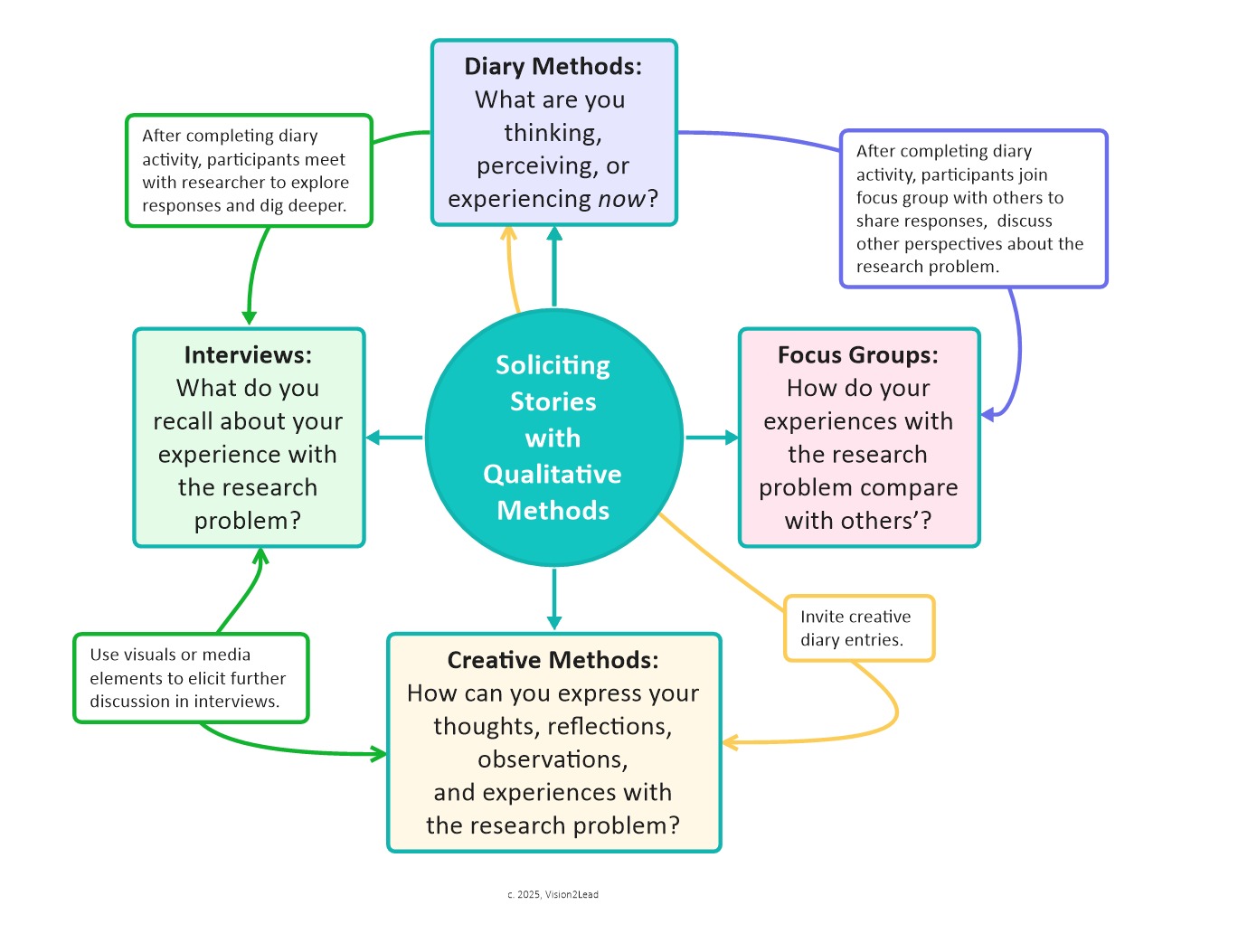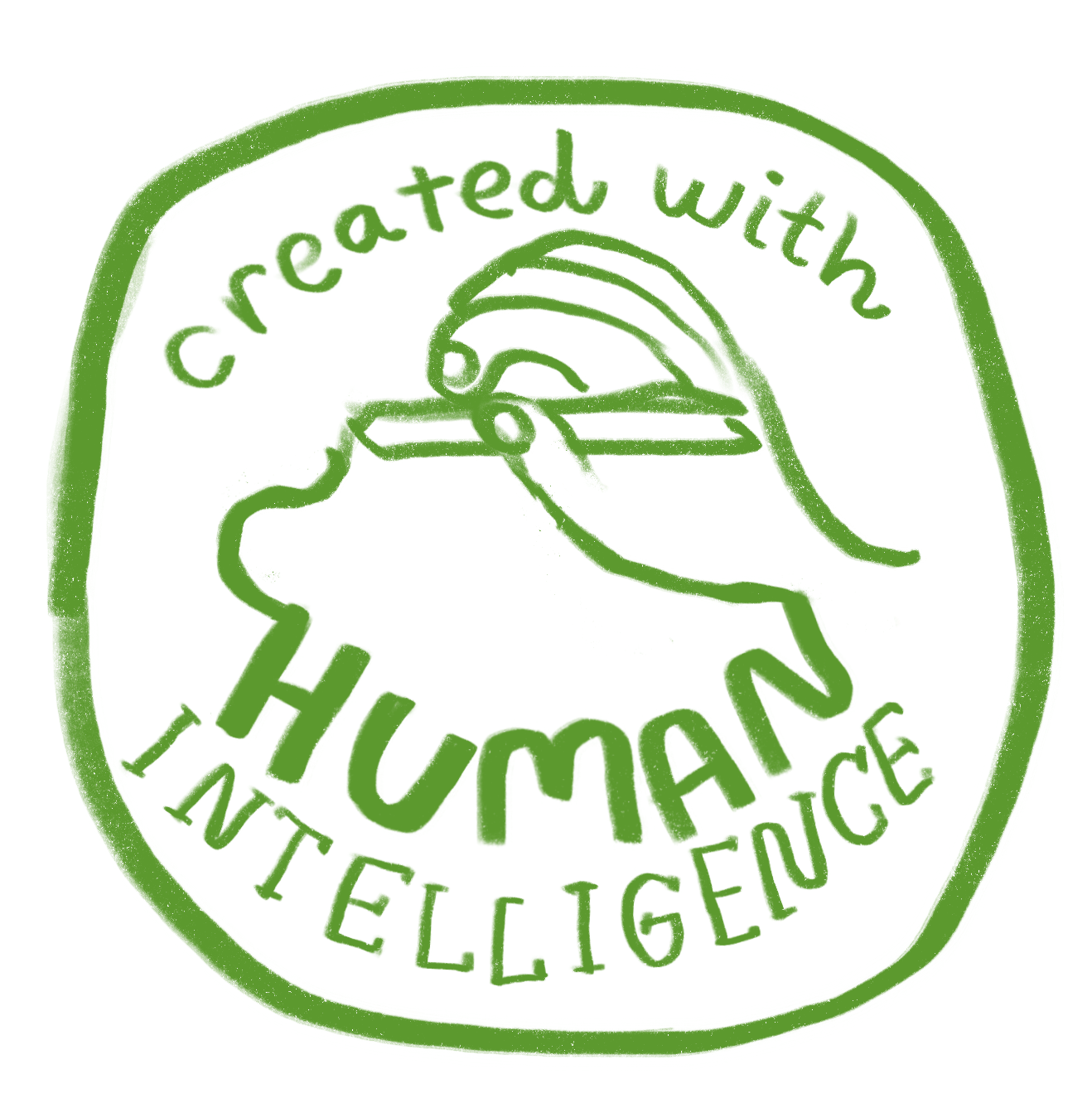Diary Methods: Why and How?
How do solicited diaries fit with the research purpose?
This month, October 2025, we’re exploring diary and narrative methods. Diaries used as data sources can be either solicited, created in response to prompts and/or questions, or unsolicited, kept by individuals for their own purposes. The newsletters I’ve shared so far discuss solicited diaries:
Narratives and Diaries in Online Research
Learning about the lived experience from first-hand accounts
Real or Not? Human participants in qualitative research online
Before we move on to explore unsolicited diaries I’ll offer thoughts on two big questions:
Why use diary methods?
Can I mix diary and other methods?
How can I choose and use digital tools to collect data with diary methods?
Why use diary methods?

We have many options when choosing a qualitative method for a study involving human participants. In previous months we’ve explored online interviews, focus groups, and creative methods. Let’s compare and contrast these approaches with diary methods so you can select the one (or more than one!) that fits the purpose of the study and works with your target population. Any effort to simplify qualitative methods is risky because there are always “it depends…” considerations. Nevertheless, here are top-level questions to help you decide what direction to pursue:
Interviews: What do you recall about your experience with the research problem?
Focus Groups: How do your experiences with the research problem compare with others’?
Creative Methods: How can you express your experiences with the research problem?
Diary Methods: What are you thinking, perceiving, or experiencing now?
Let’s walk through a hypothetical example. If I wanted to study coping strategies for stress, I could:
Interview participants and ask them to recall times when they experienced stress, tell you about the circumstances and triggers, and explain ways they coped.
Focus Group with participants would allow them to hear from each other and either verify similar experiences expressed by others or offer different perspectives.
Creative Methods could entail asking participants to draw, map, or photograph a situation that causes them stress and/or to show ways they respond to calm down.
Diary Methods allow you to collect data from participants as stress happens, and as they try stress reduction tactics. Instead of posing a set of questions or prompts at one time in an interview or focus group, I could pose a few questions each day, over a limited period of time.
I might send or post questions each afternoon. I’d want to make them simple and quick to answer. I could ask the same questions each day or vary them. Here is a semi-structured example:did you have a stressful event today? (yes/no/maybe)
how would you rate the stress level? (1 is low, 5 is high)
did a stressful event derail other planned activities? (yes/no/maybe)
how did you deal with stress today?
exercise
meditation or breathing exercises
arts and crafts
talk with friends
other (explain):
What will you do differently tomorrow?
Here is an unstructured example:What people or events caused you stress today?
How did you respond?
Did your strategies work (or not)?
By asking questions on an incremental basis, you gain participants’ perspectives while the experiences are fresh. You can either ask a predetermined set of questions or change craft the next ones based on responses. If the participant said “talk with friends” every day, you could ask about the friends’ listening style, or ask whether the friend also confides about their stressful events.
Diary and other methods can be fruitfully combined. An interview after the diary sequence allows you to ask for clarification or follow-up. Creative methods invite participants to use art journaling, including making analog entries and scanning them to share, or to sharing visual or multimedia responses. In a post-diary focus group participants can discuss and build on each other’s responses. Additionally, diary methods can be combined with quantitative approaches for mixed methods studies.
Related Posts
Do Research Interviews Online
Engage human-to-human for meaningful exchangesPrepare for an Online Interview
It involves more than asking participants to log on!Learn about focus groups, then design and conduct them online.
How can I choose and use digital tools to collect data with diary methods?
I am typically reluctant to suggest brand names for digital tools since features, ownership, and policies change. In terms of criteria, security and protection of participants’ identities and the data are top priorities. This is harder and harder with prevalent AI and data scraping! In general, a free tool is inherently more risky than a paid one. I recommend choosing tools that allow you to download records and recordings to your own hard drive, unless you really trust the company to keep data secure when stored in the cloud. I would be reluctant to use a social media platform because even seemingly “private” groups or messaging options are not reliably secure.
The best choices are tools actually designed for research. Itracks, for example, is in the business of serving qualitative researchers with flexible tools and secure data protection. While their customers are primarily businesses doing market research, they are friendly and supportive of academic researchers. The asynchronous Board allows you to set up a forum where you can interact one-one with each participant. Participants can respond with text, images, polls, or with video. You can also open set it up for participants to interact in a focus group at at some stage of the research. Their synchronous platform works for interviews or focus groups. Itracks has built-in consent features and the ability to export data for analysis. Itracks is a friend; if you contact them for a consultation tell them you learned about their tools here!
Bespoke apps are possible for larger research projects, and can be customized to the project. Commercial diary apps are an option for smaller or student projects. Again, make sure that data is protected and secure from AI scraping or unauthorized access. Also, make sure that the app is available on multiple platforms, phones or computers, Android and Apple. The Penzu diary app appears to meet these criteria, with free and monthly fee-based options that add more levels of security.
Email or text message exchanges are a simple way to conduct a diary exchange. While this approach can seem more like a written interview than a journaling process, the advantage is that participants don’t have to learn a new tool or download an app. The disadvantage is that entries are not in one place so participants can’t easily review previous responses.
One more question: Why become a paid subscriber?
When the Field is Online reaches aspiring researchers in 76 countries. The newsletter and archives are free. They will remain free, that is my commitment to you and to the field. I am well aware of the fact that independent researchers and those in low-resource settings lack access to academic libraries with robust digital databases so I hope the open-access resources I share are useful.
At the same time, I try to add value for paid subscribers including:
Practical Skills and Techniques: A recorded discussion or how-to tutorial and related resource materials.
Big Questions Answered: I will answer the subscriber questions. Post your questions in the chat or comment areas!
Food for Thought: Prompts for discussion or journal reflections.
Instructional materials: Suggestions for those who teach or supervise researchers.
Mental/Spiritual Refreshment: A little bit or art, nature, food, or fun!
Office Hours: I’ll be starting office hours on Zoom for live conversation.
In addition to individual paid subscriptions, I’m setting up a 25% group discount for those who teach methods or supervise researchers, or for any group of 3 or more who want to learn together. Click here to subscribe as a group.
Please consider supporting this effort. This is a particularly good time to upgrade, because November is Academic Writing Month, with lots of extras!
This Creative Commons license enables reusers to copy and distribute the material in any medium or format in unadapted form only, for noncommercial purposes only, and only so long as attribution is given to the creator. In other words, you can use and share but you do NOT have my permission to upload the newsletter or art to AI.
Thanks to Beth Spencer for this badge, indicating that no AI tools were used to create this post!




